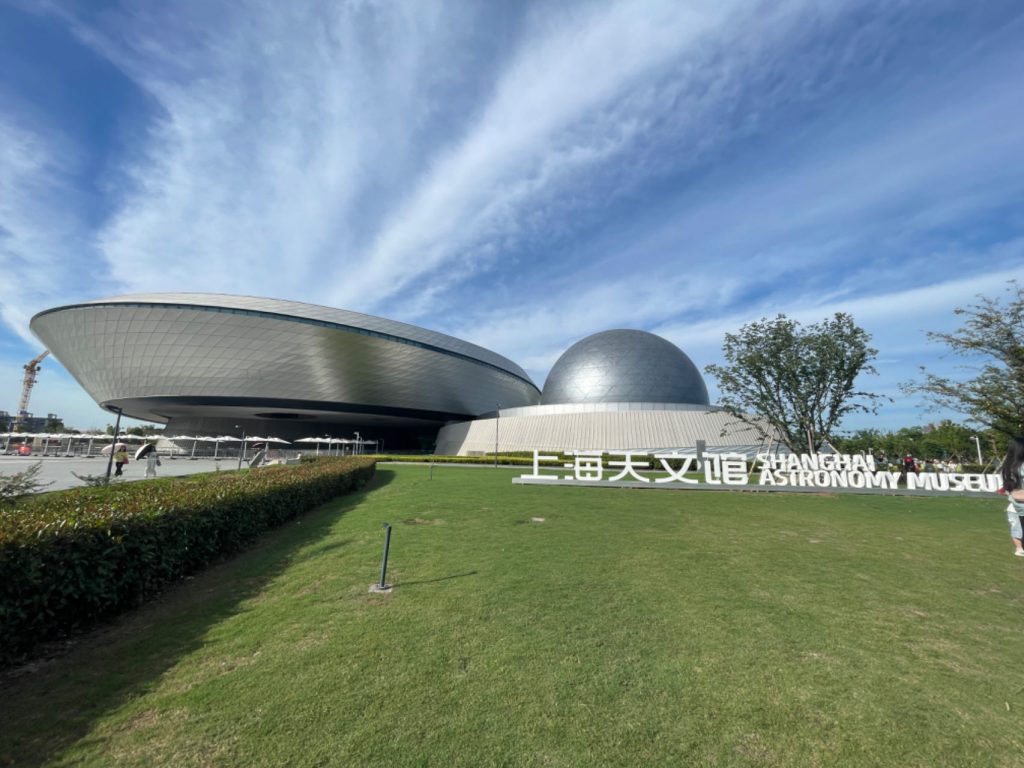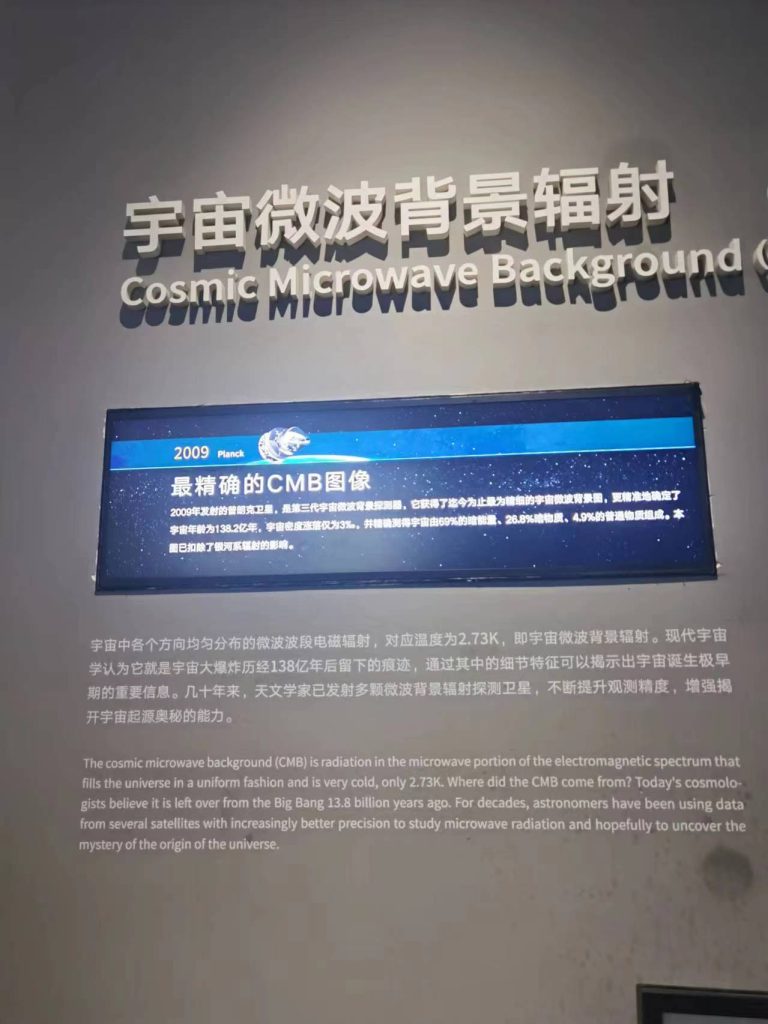Shanghai Planetarium, part of the Shanghai Science and Technology Museum, is the largest planetarium in the world. Opened in July 2021, it is a marvel of architecture and technology, designed to inspire curiosity about the universe and provide an immersive experience of space exploration. The planetarium offers a variety of exhibits, shows, and interactive installations that explore the cosmos from scientific, historical, and cultural perspectives.

Theme 1: Home
The first floor of the museum is about our home — the solar system. This section focuses on humanity’s relationship with Earth and its place in the cosmos. It explores how ancient civilizations began observing the skies, forming the foundations of modern astronomy. Exhibits include models of celestial bodies, explanations of astronomical phenomena, and stories of early stargazing, showing how our understanding of space has evolved over time.

Understanding Our Planet: This part of the exhibition focuses on Earth as a unique, habitable planet in the vast universe. It explores Earth’s relationship with the sun, moon, and other planets in our solar system. Visitors are introduced to concepts like Earth’s rotation, revolution, and how these motions cause day and night, seasons, and tides.
Celestial Motions: The section explains ancient observations of celestial bodies, such as the movements of the sun, moon, stars, and planets. It also covers how early astronomers, like those in ancient China, Greece, and the Middle East, developed their understanding of these motions through careful observation.

Theme 2: Universe
The Universe section takes visitors deeper into the vastness of space, with a focus on exploring the cosmos. It covers topics such as the formation of galaxies, stars, planets, black holes, and other cosmic phenomena. This zone also highlights the latest space missions and discoveries, providing insights into how modern technology helps humanity explore the unknown realms of the universe.
One of the most important knowledge to learn in cosmology is measuring the celestial distance, and they are usually really really long distance which you need special methods to calculate it.
- Objects close by: trigonometric parallax (for objects less than a few thousands light years away)
- If you pull out your finger and close one eyes, and then switch to the other eyes, the finger will appear in different positions. That’s the idea of parallax. Use the distance and angle in between and trigonometric knowledge, we are able to find the distance of the celestial object to us.
- Standard candles (for objects 40 million light years away)
- Cepheid → measuring the period of the cycle, the rate of fluctuations directly related to how bright they are on average
- Type 1a supernova (for objects several billions light years away)
- Supernovae: giant stellar explosion → stars die (super bright)
- Intrinsically bright ones fade slower than fainter ones
- Using doppler effect
- Hard to predict a supernovae

- Dark matter
- The universe is getting bigger and the expansion is speeding up. We expect gravity to pull things together, and therefore slow down the expansion. However, the universe is expanding faster and faster.
- Dark energy could cause expansion to speed up which contains in 70% of the universe, and it would work in a way opposite to gravity
- Dark matter does not reflect or transmit light, so we couldn’t see it
- Three evidence for dark matter
- Some stars are going so fast that they would be flung out into space, but they stay in their galaxies, so it might be dark matter pulling them towards the center of the galaxy
- Light bends: sometimes dark matter serve as lenses, bends the space around clusters of galaxies
- Observations of the CMB provide indirect evidence for dark matter halos, as the formation of large-scale structures in the universe is strongly influenced by the amount of dark matter present.
- Potential candidate particles for dark matter
- Weakly Interactive Massive Particles (WIMP)
- Neutrolino (predicted by theory of supersymmetry
- They interact with regular matter through gravity and the weak nuclear force, but not through electromagnetic forces
- WIMPs could be produced in the early universe and would have a mass in the range of 10 to 1000 times that of a proton.
- Weakly Interactive Massive Particles (WIMP)


- Cosmic Microwave Background (CMB)


- The Big Bang Theory: Evidence and Challenges

And there are so much more… I highly recommand you to visit Shanghai Astronomical Museum & Planetarium. I bet you’ll become a physics nerd when you come back.
Theme 3: Odyssey
This zone is dedicated to human space exploration, particularly the advances made in space travel and the history of human efforts to explore beyond Earth. It includes exhibits on astronauts, space stations, and the future of space exploration, showcasing China’s own achievements in spaceflight and aspirations for future missions. Visitors can engage with interactive displays, simulations, and multimedia that explore the challenges and successes of space travel.
Each of these thematic zones presents an engaging blend of science, technology, and culture, aiming to inspire curiosity about the universe and encourage scientific exploration.

The Unvierse is infinite, and the exploration is endless.

*All Photos are from Shanghai Planetarium
